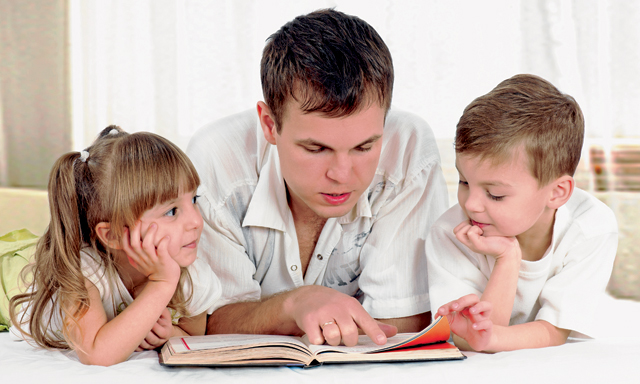Professional storyteller, Fiona Lindsay recently conducted a storytelling workshop called ‘Telling Tales’ at the Emirates Litfest held in Dubai. For the those of us who live down the road, Fiona imparted her top storytelling tips.
Reading aloud to a group of young children isn’t as easy as it looks. How can you make the whole process of simply reading a story more interesting and engaging?
Reading a story aloud and capturing the imagination and attention of young children requires several vital ingredients: enthusiasm, playfulness, patience and, most importantly, a strong desire to share the story and bring it to life in the most exciting way possible. The reader has to turn into a performer and enjoy the challenge of becoming different characters and inventing voices for them, as well as other sound effects
to add to the atmosphere.
Which types of stories are best used for dramatic effect – and what should you consider when choosing a story that is best suited to the audience?
Selecting the right story to suit the mood of a young audience is terribly important, as is the type of tale you tell – depending on what time of day it is. Children love stories full of blood, guts and gore, but these should be saved for a daytime adventure and not just before bedtime! A story that is stuffed with brilliant descriptions of characters and landscapes is always good to read aloud as it places the listener immediately into the heart of the tale. Often, the fewer the words the better as this leaves space for the audience to be part of it. Stories that include challenge, exploration, secrets, daring, fun and mystery are always
a big hit.
What kinds of theatrical methods would you use to engage older children in a tale, as opposed to a younger audience?
There are so many different ways of telling a story aloud and engaging your audience, and often how you choose to do it depends on the age of the listener. All children will give their full attention if the reader puts their heart and soul into the activity.
Slightly older children love to become involved and lots of fun can be had by inviting them to create sound effects to add atmosphere, as well as taking on the voices of some of the characters. Also, the more you involve silliness, props and movement, the better.
For much younger listeners a story is often used to calm and comfort, so creating a cosy space for telling the tale can add to the experience. How you use your voice is also key: a young child will understand the emotion in the story by the way the reader uses the sounds in the words, such as, ‘The boy had been walking for a long, long, long time’. In this line the key word to play with is ‘long’ and the more the word is stretched out and slowed down, the more the listener will feel and understand the length of time that has passed.
Children often go through a stage where they want to put on puppet shows and tell favourite stories in their own, dramatic way. What practical things can parents do to encourage this form of creativity?
Play and make-believe come naturally to children and parents can encourage this even more in several ways. Gathering together a dressing up trunk and a prop box is a good place to start, and a percussion set can add tons of fun, too. However, the most important thing is to provide space and time for this sort of play.
Why is traditional storytelling such an important activity for children?
Hearing a story aloud is often a child’s first engagement with literature and it is our responsibility to ensure that we offer the best first experience possible. Stories fill a child with ideas, hope and ambition, helping them to understand themselves and the world, as well as to express their own thoughts and opinions. The more stories that they hear read aloud during their early years the better, as this will encourage them to love reading for themselves as they grow older. It is also a precious way of sharing time with your children and is remembered forever.
What are the fundamental differences between watching an entertaining story on TV and listening to a well-told story – and why is one better than the other?
Involving a child in a live event can stimulate them in a way that the passive experience of sitting in front of the TV often cannot. The live occasion builds confidence, trust and communication, and encourages imagination and word play. These are essential tools. By being involved in the interactive experience of story-telling, the young listener begins to understand about structure, language and drama. Establishing a balance between the live and the virtual experience is the way forward.
Any other advice?
Make time. Be playful. Make up stories. Enjoy it!









